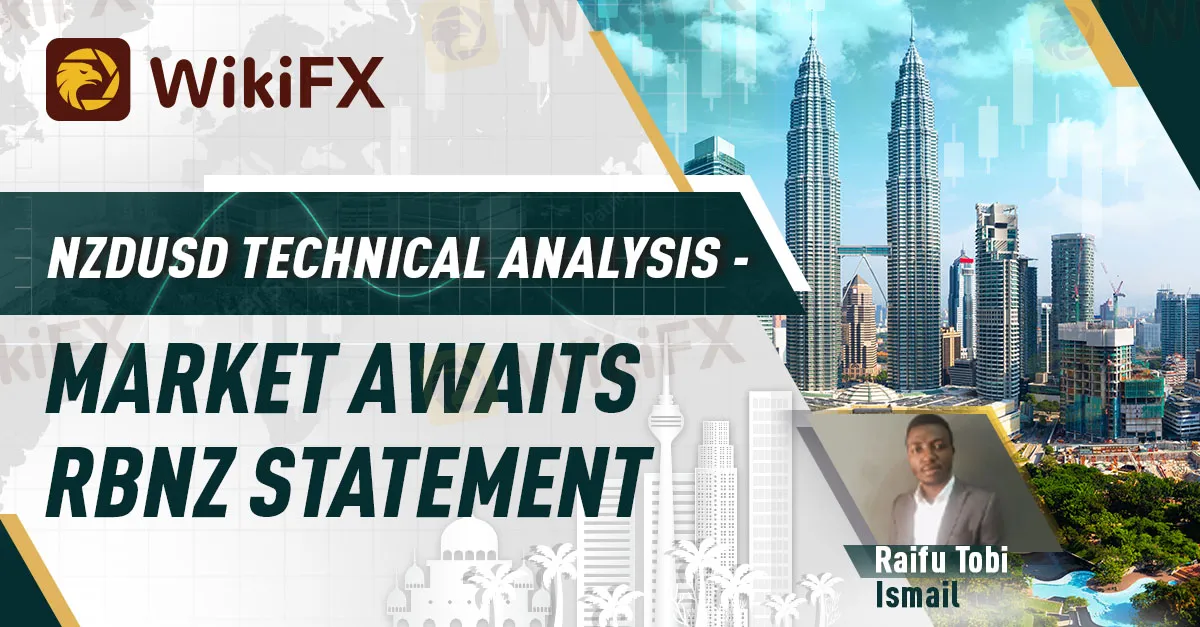简体中文
繁體中文
English
Pусский
日本語
ภาษาไทย
Tiếng Việt
Bahasa Indonesia
Español
हिन्दी
Filippiiniläinen
Français
Deutsch
Português
Türkçe
한국어
العربية
NZDUSD TECHNICAL ANALYSIS - MARKET AWAITS RBNZ STATEMENT
Abstract:The Reserve Bank of New Zealand will be releasing their interest on Wednesday, 24th of Nov. 2021. That will be the seventh and the last time this data will be released this year, according to data received from Forexfactory. As the year comes to an end, RBNZ will release their interest to show how well the economy has performed post-pandemic. An increase in the interest rate signifies that the economy is doing great, thereby strengthening the NZD currency.

The Reserve Bank of New Zealand will be releasing their interest on Wednesday, 24th of Nov. 2021. That will be the seventh and the last time this data will be released this year, according to data received from Forexfactory. As the year comes to an end, RBNZ will release their interest to show how well the economy has performed post-pandemic. An increase in the interest rate signifies that the economy is doing great, thereby strengthening the NZD currency.
RBNZ increased the interest rate from 0.25% to 0.5% last October, and it is expected to increase it further this week. The recent increase in the interest rate was a result of the economy that was reopened after the pandemic. The rate was kept unchanged at 0.25% for most of 2020. It was the same until recently when it was increased to 0.5% from 0.25%.
Data from Forexfactory indicates that the interest rate is expected to be 0.75%, an increase to the 0.5% that was released in October.
The NZD currency has been gaining strength in the market recently. As seen on the chart below, buyers are stepping in with a lot of strength as price forms a higher-low sequence. A higher-low sequence in the market is a sign that the uptrend is resuming.

The price of NZDUSD picked a support at 0.68000 area in August as the price retraced deeply. Buyers stepped in strongly and the price rallied to 0.7150 before sellers came in again. Price formed its first higher-low at 0.68590 area, above the support level where price rallied. That was in September. The price of NZDUSD reached a high of 0.72000 before the recent pullback, which is currently going into a range as the pullback slows down. NZDUSD is forming its second higher-low in two months as the price is coming to a halt at 0.69800 support level. A strong buyers'/bulls' reaction from here will indicate that the major trend is still active and the price will possibly rise back to its October high at 0.72000.
If the interest rate is increased or left unchanged, the price of NZDUSD will resume its original uptrend, but a sudden decrease in the interest rate will push the price of NZDUSD lower.
Disclaimer:
The views in this article only represent the author's personal views, and do not constitute investment advice on this platform. This platform does not guarantee the accuracy, completeness and timeliness of the information in the article, and will not be liable for any loss caused by the use of or reliance on the information in the article.
Read more

In-Depth Review of MH Markets Trading Conditions and Leverage – An Analysis for Experienced Traders
For experienced traders, selecting a broker is a meticulous process that extends far beyond marketing claims and bonus offers. It involves a granular analysis of the core trading environment: the quality of execution, the flexibility of leverage, the integrity of the regulatory framework, and the suitability of the conditions for one's specific strategy. MH Markets, a broker with a 5-10 year operational history, presents a complex and multifaceted profile that warrants such a detailed examination. This in-depth review dissects the MH Markets trading conditions and leverage, using primary data from the global broker inquiry app, WikiFX, to provide a clear, data-driven perspective. We will analyze the broker's execution environment, account structures, and regulatory standing to determine which types of traders might find its offering compelling and what critical risks they must consider.

MH Markets Commission Fees and Spreads Analysis: A Data-Driven Breakdown for Traders
For any experienced trader, the long-term viability of a brokerage partner hinges on a delicate balance of trust, execution quality, and, critically, cost. Trading fees, both direct and indirect, can significantly erode profitability over time. This makes a granular understanding of a broker's cost structure not just beneficial, but essential. This in-depth analysis focuses on MH Markets, breaking down its commission fees, spreads, and other associated costs to provide a clear, data-driven perspective for traders evaluating this broker for their long-term strategies. Drawing primarily on verified data from the global broker inquiry platform WikiFX, alongside other public information, we will dissect the MH Markets spreads commissions cost structure. We aim to move beyond marketing claims and uncover the practical, real-world costs of trading with this broker, helping you determine if its pricing model aligns with your trading style and financial goals.

MH Markets Deposits and Withdrawals Overview: A Data-Driven Analysis for Traders
For any experienced trader, the integrity of a broker is not just measured by its spreads or platform stability, but by the efficiency and reliability of its financial plumbing. The ability to deposit and, more importantly, withdraw capital without friction is a cornerstone of trust. This review provides an in-depth, data-driven analysis of the MH Markets deposits and withdrawals overview, examining the entire fund management lifecycle—from funding methods and processing speeds to fees and potential obstacles. MH Markets, operating for 5-10 years under the name Mohicans Markets (Ltd), has established a global footprint. With a WikiFX score of 7.08/10, it positions itself as a multi-asset broker offering a range of account types and access to the popular MetaTrader platforms. However, for a discerning trader, the real test lies in the details of its payment systems and the security of their funds. This article dissects the MH Markets funding methods withdrawal experience, leveraging pr

In-Depth Uniglobe Markets Commission Fees and Spreads Analysis – What Traders Should Really Know
For experienced traders, the cost of execution is a critical factor in broker selection. Low spreads, fair commissions, and transparent pricing can be the difference between a profitable and a losing strategy over the long term. This has led many to scrutinize the offerings of brokers like Uniglobe Markets, which presents a tiered account structure promising competitive conditions. However, a professional evaluation demands more than a surface-level look at marketing claims. It requires a deep, data-driven analysis of the real trading costs, set against the backdrop of the broker's operational integrity and safety. This comprehensive Uniglobe Markets commission fees and spreads analysis will deconstruct the broker's pricing model, examining its account types, typical spreads, commission policies, and potential ancillary costs. Using data primarily sourced from the global broker inquiry platform WikiFX, we will provide a clear-eyed view of the Uniglobe Markets spreads commissions prici
WikiFX Broker
Latest News
GCash Rolls Out Virtual US Account to Cut Forex Fees for Filipinos
The 350 Per Cent Promise That Cost Her RM604,000
INZO Commission Fees and Spreads Breakdown: A 2025 Data-Driven Analysis for Traders
Garanti BBVA Securities Exposed: Traders Report Unfair Charges & Poor Customer Service
"Just 9 More Lots": Inside the Endless Withdrawal Loop at Grand Capital
Private payroll losses accelerated in the past four weeks, ADP reports
Core wholesale prices rose less than expected in September; retail sales gain
Consumer confidence hits lowest point since April as job worries grow
CFTC Polymarket Approval Signals U.S. Relaunch 2025
MH Markets Commission Fees and Spreads Analysis: A Data-Driven Breakdown for Traders
Currency Calculator



